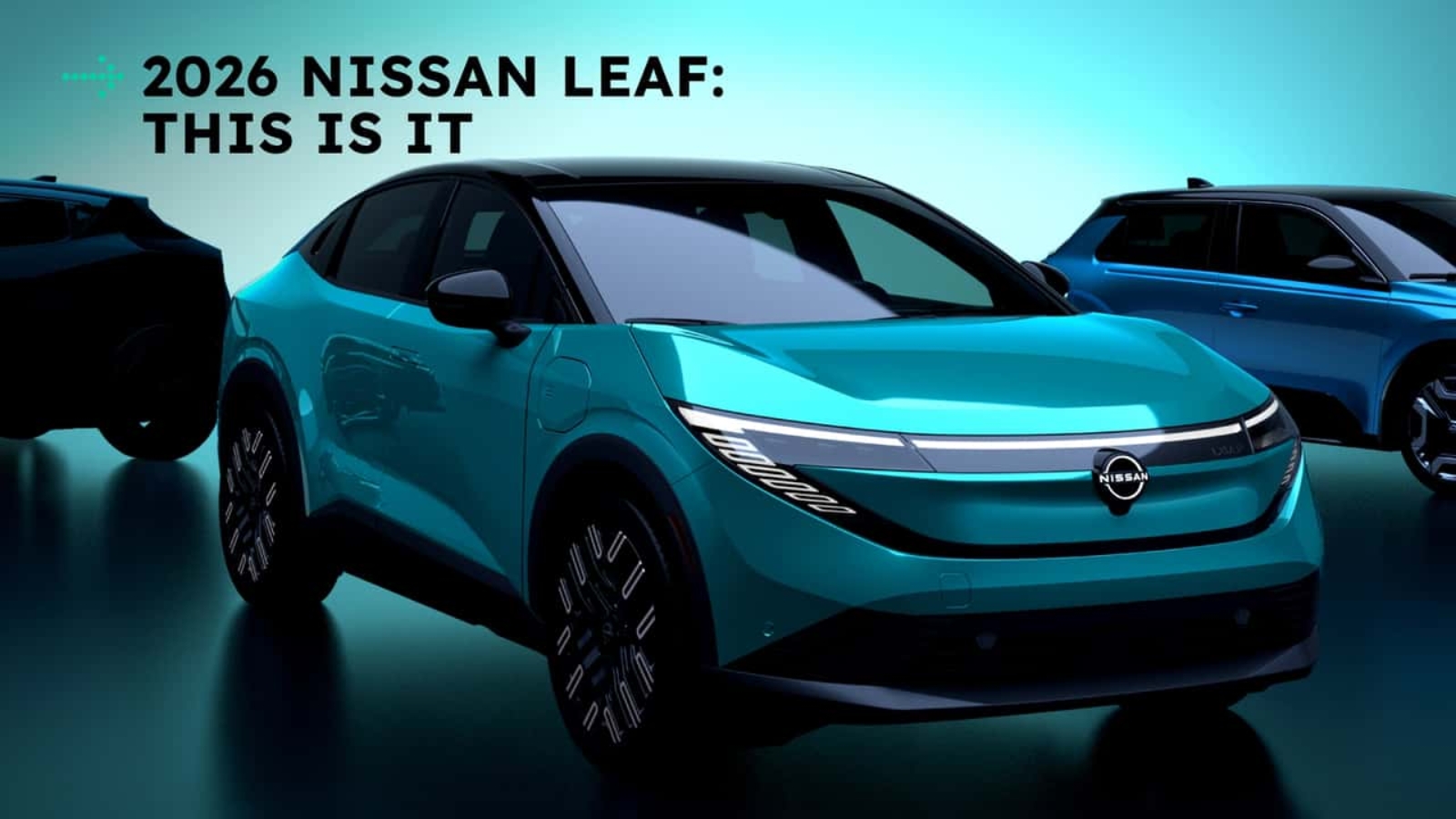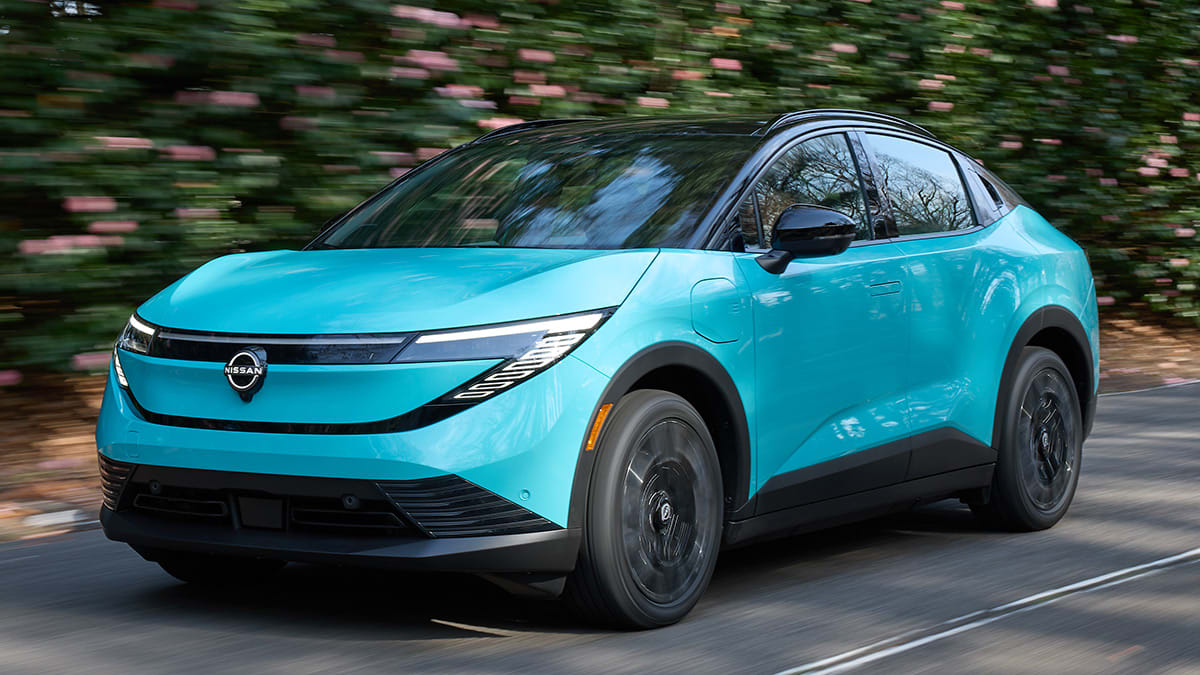Nissan has just pulled the covers off the completely redesigned 2026 Leaf, and it’s nothing like what you’d expect. Gone are the days of the familiar hatchback shape – the new Leaf is taking a bold leap into SUV territory, and Australian drivers will get their hands on it next year.
If you’ve been considering an electric vehicle or currently drive a Leaf, this news is pretty significant. Let’s break down what this means for you and whether this electric SUV might be worth the wait.
The Big Change: From Hatchback to SUV
The most obvious difference with the 2026 Leaf is its completely new body style. Nissan has ditched the hatchback design that defined the first two generations and transformed it into a crossover SUV. This isn’t just a minor tweak – we’re talking about a taller vehicle with higher ground clearance and black plastic wheel-arch extensions that give it that rugged SUV look.
The design takes inspiration from Nissan’s Chill Out concept that debuted back in 2021, featuring flush-fitting front door handles and hidden rear door handles for a clean, modern appearance. The signature dark 7-shaped headlights are connected by a black plastic strip that’s embossed with the Leaf name and includes an integrated light bar.
What’s Under the Hood (Or Lack Thereof)
Platform and Performance
The new Leaf rides on Nissan’s CMF-EV architecture – the same platform that underpins the Ariya electric crossover. This is good news because it means proven technology and potentially better performance than the current model.
While Nissan hasn’t released specific technical details yet, they’re promising “significant range improvements.” To put this in perspective, the current Leaf offers:
- Base model: 270km WLTP range with a 39kWh battery
- e+ variant: 385km WLTP range with a 62kWh battery
| Current Leaf vs Expected 2026 Leaf | Current Model | 2026 Model |
|---|---|---|
| Body Style | Hatchback | Crossover/SUV |
| Platform | Leaf-specific | CMF-EV (Ariya-based) |
| Range (WLTP) | 270-385km | Significantly improved |
| Charging Port | CHAdeMO (front center) | CCS (right side) |
| Wheel Options | Standard sizes | 19-inch alloy available |
| Roof Options | Standard | Panoramic sunroof available |
Charging Gets a Major Upgrade
Better Charging Options
One of the biggest improvements is the move away from the CHAdeMO charging standard that made the current Leaf somewhat inconvenient to charge. The 2026 model will use the more common CCS charging port, positioned on the right-hand side behind the front wheel arch instead of front and center.
In North America, the new Leaf will feature a NACS charging port, making it compatible with Tesla’s extensive Supercharger network. While Australian specifications haven’t been confirmed yet, this suggests Nissan is serious about improving the charging experience.
What This Means for Daily Use
If you’ve ever driven a current Leaf, you know that finding a CHAdeMO charger can be frustrating. The switch to CCS means access to many more public charging stations, which could be a game-changer for longer trips and daily convenience.
Features That Matter
The 2026 Leaf will come with some nice touches that should appeal to Australian families:
Premium Options Include:
- 19-inch alloy wheels for a more substantial look
- Panoramic sunroof for that open-air feeling
- Blacked-out roof with matching A-, B-, and C-pillars
These features suggest Nissan is positioning the new Leaf as a more premium offering compared to the current model, which makes sense given the move to SUV styling.
When Can You Get One?
Australian Timeline
Nissan has confirmed that Australian sales will begin in 2026, with production starting later this year. Australian market vehicles will continue to be built at Nissan’s Sunderland factory in the UK, the same facility that produces the current Leaf.
What to Expect
More technical details will be revealed mid-2025, so we’ll have to wait a bit longer to know exactly what range, power, and pricing to expect. However, given that it shares architecture with the Ariya, we might see similar battery options (65kWh and 90kWh) and drivetrain choices ranging from front-wheel drive to all-wheel drive configurations.
Should You Wait or Buy Now?
The current Leaf is in run-out mode in Australia with some attractive deals available. If you need an electric vehicle now and primarily do city driving, the current model might still make sense. However, if you can wait and want better range, more charging options, and SUV practicality, the 2026 model looks promising.
The transformation from hatchback to SUV reflects the market’s preference for higher-riding vehicles, and the improved charging infrastructure compatibility could make electric vehicle ownership much more convenient for Australian drivers.
Frequently Asked Questions
Q: Will the 2026 Leaf be more expensive than the current model?
A: Nissan hasn’t announced pricing yet, but the move to SUV styling and premium features suggests it may cost more than the current hatchback.
Q: Can I charge the new Leaf at Tesla Superchargers in Australia?
A: Australian charging specifications haven’t been confirmed yet, though North American models will have Tesla Supercharger compatibility.
Q: When will we see full specifications and pricing?
A: Nissan plans to reveal complete technical details and pricing information in mid-2025.

